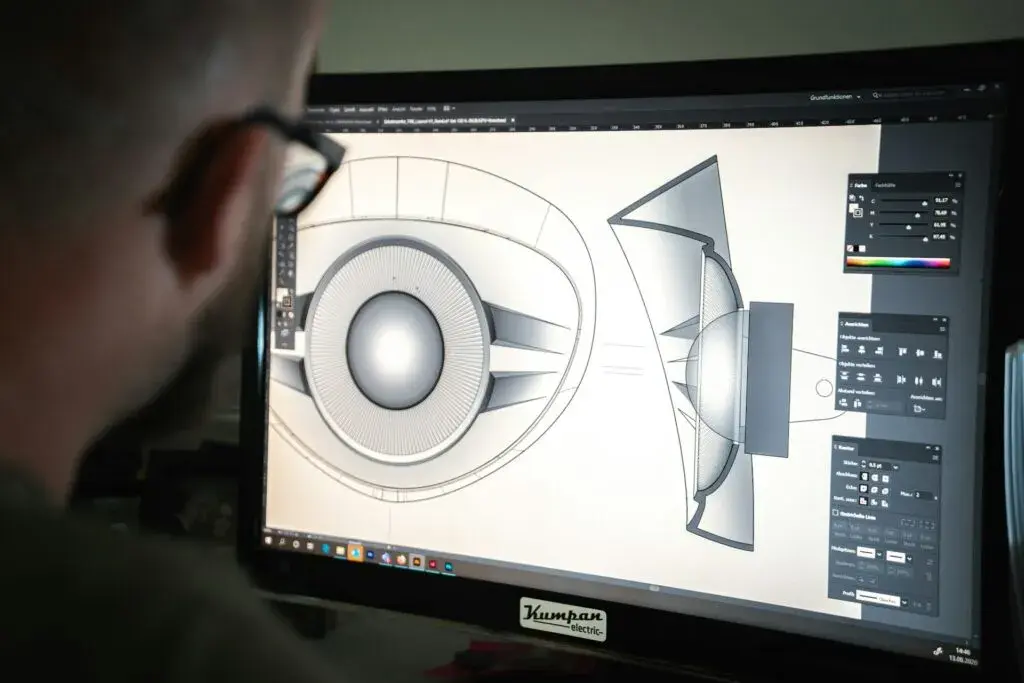
In 2025, the employment environment is changing fast, and alternative career paths for CAD drafter are increasing. For instance, the parametric design software market is projected to grow at a compound annual growth rate (CAGR) of 6.8% from 2025 to 2031, driven by increasing demand for customized and innovative designs across industries. Additionally, research indicates that parametric design can increase efficiency by up to 90% in the mechanical industry. These figures underscore the importance for CAD professionals to upskill and embrace computational design skills, including proficiency in tools like Rhino and Grasshopper, to remain competitive in the evolving job market.
Here, we explore how a CAD drafter can elevate their career by embracing computational design. We’ll compare traditional CAD drafting with computational design, explain why these skills are advantageous, outline the abilities top employers seek, and guide you to where you can train and get certified, including details of our Master Computational Design Course.
CAD Drafting vs. Computational Design
|
Feature / Approach |
CAD Drafting |
Computational Design |
|
Workflow |
Manual creation of drawings, with each change requiring redrafting. |
Algorithmic, rule-based modelling that updates designs automatically. |
|
Iteration Speed |
Time-consuming, especially for complex projects. |
Fast, with automated updates and reduced repetitive work. |
|
Design Flexibility |
Limited by manual methods and fixed geometry. |
Parametric models adapt instantly to changes, allowing rapid exploration of options. |
|
Complexity Handling |
Challenging to manage intricate forms or data-driven designs. |
Handles complex geometries and large datasets with ease using computational design software. |
|
Upfront Investment |
Low-tech barrier; manual skill focus |
Requires coding or software scripting |
|
Output Quality |
Dependent on the drafter’s manual skill. |
Consistently accurate, driven by predefined rules and automation. |
This table clarifies how computational design software capabilities far exceed traditional drafting tools in versatility and efficiency.
Why CAD Drafter Need To Learn Computation Design?

For professionals pursuing alternative career paths for CAD drafter roles, learning computational design is now essential, and the advantages are clear:
- Greater efficiency and faster iteration – Computational workflows reduce design cycle times.
- Enhanced adaptability – Parametric models respond automatically to changes, enabling more flexible outputs.
- Elevated creativity – Algorithmic logic lets designers explore forms beyond manual drafting limits.
- Competitive advantage – Employers value those who can apply Python scripting, computational design skills for CAD drafter, and computational design software knowledge.
- Higher earning potential – With skills such as facade optimization and BIM automation, CAD drafter salary prospects improve.
- Broader career paths – Upskilling opens doors to advanced roles like computational designer, BIM automation specialist, and facade engineer.
These advantages underscore why embracing computational design is a critical step for those seeking alternative career paths for CAD drafter and wanting to upskill as a CAD drafter.
The Skills CAD Drafter Needs to Break Through And What Top Employers Want?

To stay competitive, CAD professionals must blend strong technical skills with adaptable soft skills. The shift toward computational design software means employers now want individuals who combine creativity with automation expertise. Building computational design skills for CAD drafter roles requires mastering advanced tools, industry workflows like BIM process automation, and specialisations that set you apart. Here’s what employers value most:
Software Skills
Employers expect familiarity with several key tools, each playing a vital role in computational design skills for CAD drafter roles:
- Rhino – A powerful 3D modelling software valued for precision and handling complex geometries. Employers seek drafters who can confidently create accurate, detailed models for design and fabrication.
- Grasshopper – A visual programming plugin for Rhino that enables algorithmic and parametric modelling. Professionals skilled in building adaptable, rule-based models have a strong edge in roles requiring computational design software expertise.
- Dynamo – A visual programming tool integrated with Revit, used to automate tasks, enhance BIM automation, and support BIM process automation in large projects.
- Python scripting proficiency – Offers flexibility for custom automation and advanced parametric control. Even basic Python knowledge can expand your ability to customize tools and integrate platforms effectively.
These software skills link directly to computational design skills for CAD drafter, and help establish a pathway to the parametric CAD drafter course content.
Soft Skills
Beyond software, these human skills matter:
- Analytical thinking – Understanding design logic and constraints.
- Problem-solving – Adapting scripts and models to meet project goals.
- Attention to detail – Ensuring algorithmic inputs produce accurate outputs.
- Communication – Explaining computational design logic to non-technical stakeholders.
- Collaboration – Working with architects, engineers, and BIM teams.
These soft skills complement technical ability and are vital for roles involving facade optimization and BIM automation tools.
In-Demand Specialisation
Some specialization areas where demand is strong include:
- Facade optimization – Designing efficient, buildable facades using computational models to balance aesthetics, performance, and cost.
- Structural rationalization – Translating complex designs into constructible structural systems using rule-based approaches.
- BIM automation – Streamlining documentation and workflows using BIM automation tools and automating repetitive tasks in BIM software.
Gaining specialization in these areas enhances your profile for employers looking for computational design capabilities and increases your CAD drafter salary potential.
Where To Learn These Skills & Get Certified?
In today’s competitive market, CAD professionals seeking alternative career paths for CAD drafter roles need formal training and recognized credentials to stand out. The Master Computational Design Course by Novatr is designed to help CAD professionals move confidently into computational workflows.
It delivers hands-on learning experiences with industry-standard tools to learn Rhino 3d, Grasshopper, Dynamo, and Python scripting, all within the context of real architectural and engineering challenges. Unlike generic tutorials, it integrates practical project work with ongoing feedback from industry mentors, ensuring that you develop not just tool proficiency but also problem-solving expertise.
Key USPs of the Course
- Industry-relevant skills – Gain proficiency in computational design software like Rhino and learn Grasshopper 3d, plus automation skills using Dynamo and BIM automation tools.
- Specialised applications – Learn how to apply facade optimization, structural rationalization, and BIM process automation to streamline workflows and enhance design outcomes.
- Certification credibility – Earn a computational design certificate that demonstrates your capability to employers.
- Career-oriented focus – The programme is structured like a parametric CAD drafter course, preparing you for roles that offer higher CAD drafter salary potential and diverse career progression.
- Mentorship and guidance – Receive personalized feedback from industry experts who understand current demands in computational design.
Whether you’re seeking to broaden your skill set or transition to a new role, this computational design course offers a direct route to professional growth. By mastering computational design skills for CAD drafter applications and gaining formal certification, you position yourself for in-demand roles and secure your place in the evolving design landscape. With expertise in Python scripting, facade optimization, and BIM automation, you’ll have the tools and recognition needed to advance in both traditional and alternative career paths for CAD drafter.
Conclusion
In 2025, thriving as a CAD drafter means embracing computational design as a vital skill set. By exploring alternative career paths for CAD drafter, and choosing to upskill as a CAD drafter, professionals unlock opportunities that translate into real advantage.
Structured training and a computational design certificate, through the industry-focused Masters in Computational Design by Novatr, equips individuals with both technical expertise and recognition. For CAD professionals seeking to level up, investing in computational design skills is not just beneficial; it’s transformative.
Visit our resource page to get started and receive expert guidance on advancing your career.
Was this content helpful to you



.jpg)




